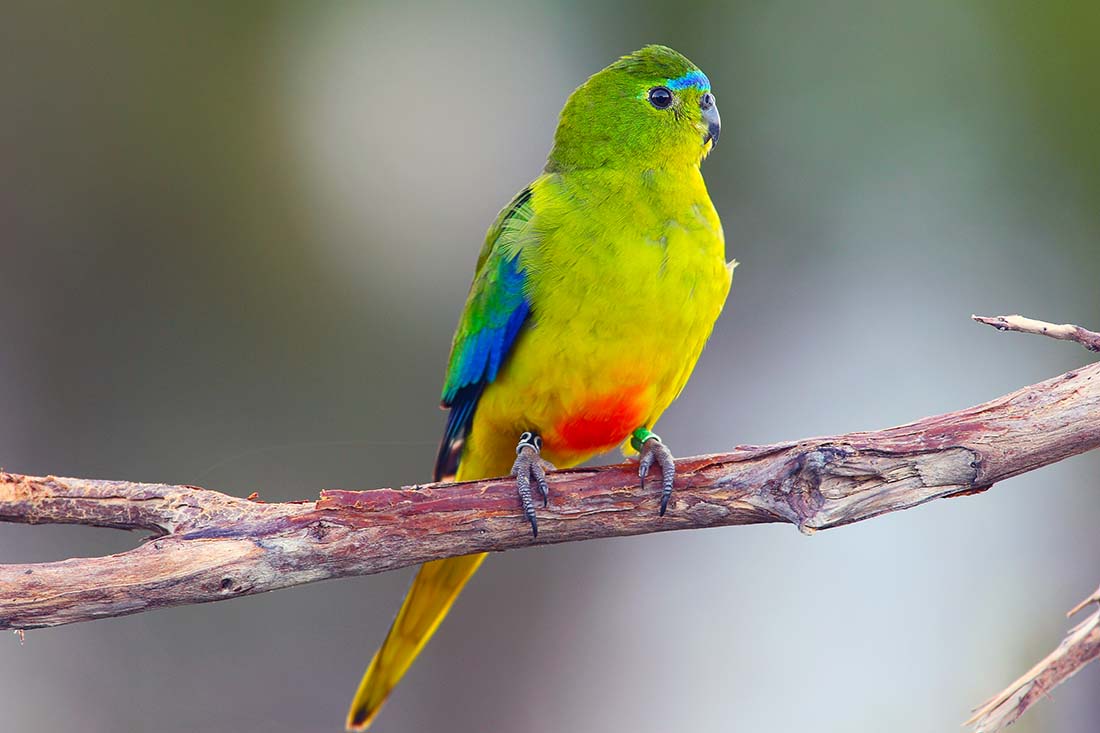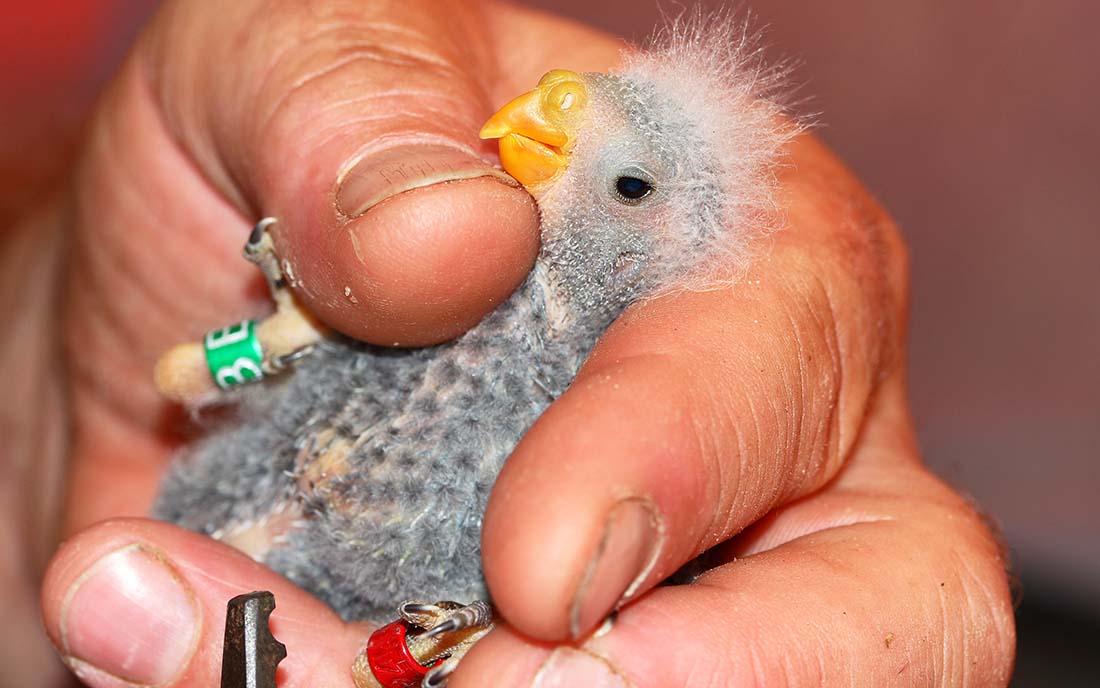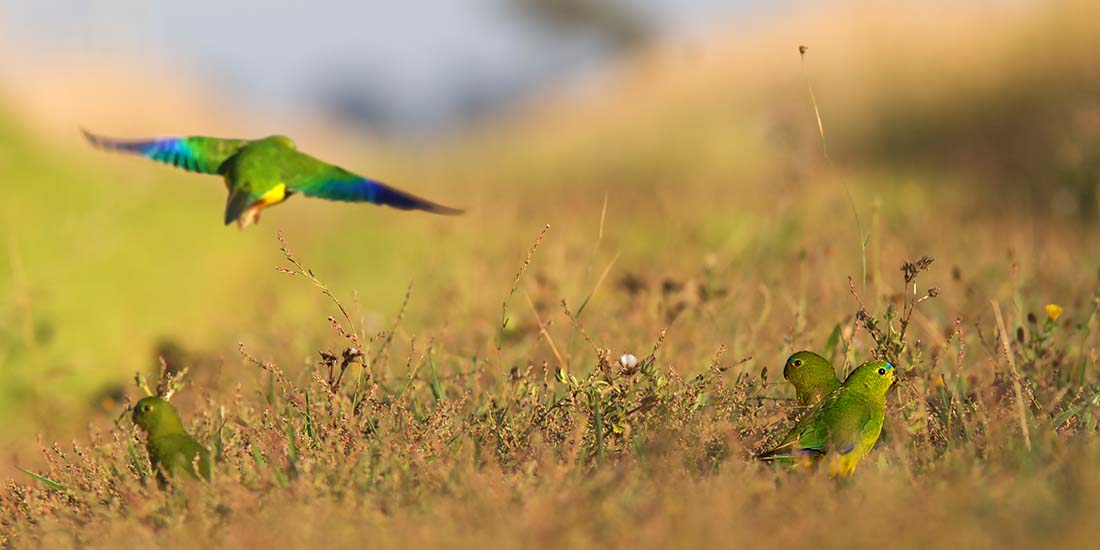Efforts to help the Orange-bellied Parrot
Orange-bellied Parrots (OBPs), a critically endangered species, are successfully being bred and released into the wild in the hope of increasing the wild population of this iconic species. Efforts are also being made to protect and restore habitats for the OBP such as coastal salt marsh on the northern shores of Port Phillip Bay.

Breeding and preparing parrots for the wild
The Victorian and Australian Governments, Zoos Victoria, Moonlit Sanctuary and Corangamite Catchment Management Authority have invested in the Mainland Release Trial which aims to increase the size of the bird’s wild-living population in conjunction with increasing their survival in the wild. The program is in its fifth year and has seen 36 OBPs released in April 2021 from three sites after being captive bred and prepared for the wild.
DELWP, Zoos Victoria, Moonlit Sanctuary, BirdLife Australia, Melbourne Water, Parks Victoria, Corangamite Catchment Management Authority (CMA), and the Tasmanian Government are partnering to deliver the Mainland Release Trial, with the hope of once again having flocks of OBPs in Victoria’s coastal habitats.

Orange-bellied Parrots need our help
The OBP is a small ‘grass parrot’ found in southern Australia and one of only three species of parrots that migrate. The OBP spends summers breeding in Tasmania and winters in coastal Victoria and South Australia. The OBP is one of Australia’s most threatened species, with just over 50 adults arriving for the start of the breeding season in 2020.
Threats to the species include habitat loss and modification, predation by cats and foxes, and spread of noxious weeds. The OBP is listed as Critically Endangered under the Environment Protection and Biodiversity Conservation Act (1999).
Melbourne Water and Parks Victoria working together
Projects to improve and restore the OBPs preferred coastal saltmarsh habitat have been undertaken at the Western Lagoon and Kirk Point; adjoining areas on the northern shores of Port Phillip Bay.
The Western Lagoon is managed by Melbourne Water and is a former sewage treatment lagoon commissioned in 1971. The ponds were decommissioned in 2004, set aside for conservation and initially supplied with recycled water to maintain a freshwater wetland habitat. However, originally this area would have been populated with coastal saltmarsh, a vulnerable vegetation that has been significantly lost due to coastal development across Victoria. The Western Lagoon has undergone two stages of works to restore some of the ponds to saline conditions. Quite naturally the saltmarsh has regrown in the area.

Kirk Point, adjacent to the Western Treatment Plant is part of The Spit Nature Conservation Reserve and is managed by Parks Victoria. Access to the public was via a track through the Western Treatment Plant, but unfortunately the site has been prone to damage from vehicles and rubbish dumping. In collaboration with Parks Victoria, Melbourne Water completed a project to restrict vehicle access to the track and designated sites using a border of large basalt rocks. This has been very successful in supporting the natural regrowth of saltmarsh in the area.
These projects have been successful at restoring the saltmarsh, which is one of the key vegetation values in the Healthy Waterways Strategy as well as being an important habitat and food source for the OBPs. These projects have led to increased sightings of OBPs at those sites, which has been great for the birds and birdwatchers alike.
Links to the Healthy Waterways Strategy - Werribee catchment
The work outlined here is contributing towards targets and performance objectives aimed at protecting two key values in the Healthy Waterways Strategy: birds, and saltmarsh vegetation.
The protection and restoration of saltmarsh on the northern shores of Port Phillip Bay also contribute to vegetation and habitat performance objectives in the Little River Estuary and priority wetlands The Spit Nature Conservation Reserve and the WTP treatment lagoons.